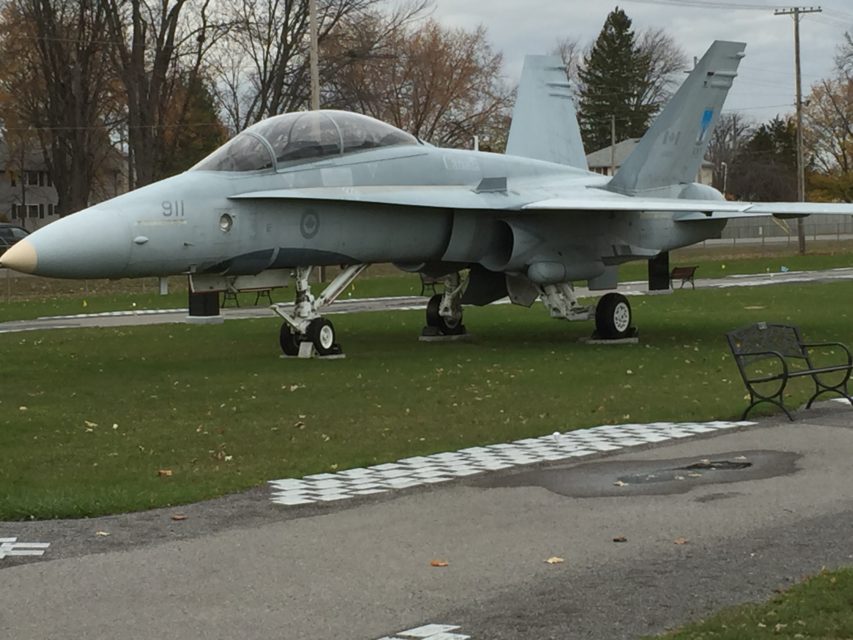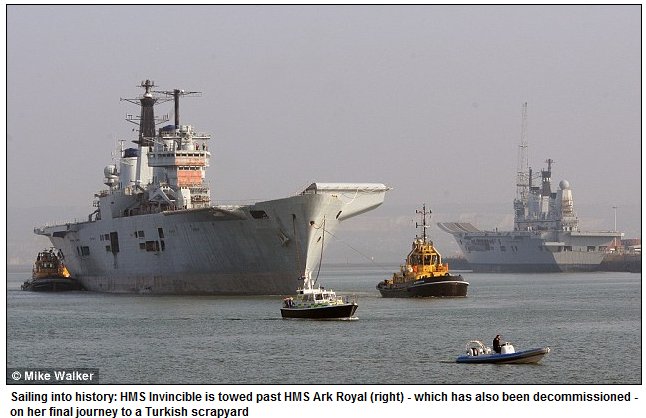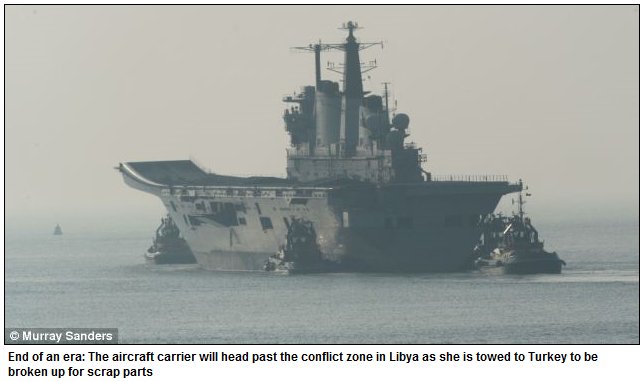[Updated, see below] The Canadian government has not been in any way serious about providing sufficient resources to the Canadian Forces since the end of the Louis St. Laurent era, and that state of affairs is not about to change under Justin Trudeau’s leadership. The Royal Canadian Air Force either is (if you believe the Minister of National Defence) or is not (if you believe the Chief of the Defence Staff) in the grip of a “capability gap” that requires the immediate sole-source purchase of 18 new Boeing Super Hornets. Canada’s current fleet of CF-18 Hornets are, despite the minor nomenclature change, very different aircraft than the F-18 Super Hornets (here’s an overview of the differences).

CF-18 at the National Air Force Museum of Canada in Trenton, Ontario, 2015.
The RCAF is a small air force and does not realistically have the capacity to support too many different types of aircraft at current staffing levels. The CF-18 and the Super Hornets count as different aircraft, so there will need to be duplication of maintenance and training facilities to ensure that the RCAF is able to keep both types operational at all times. Adding in the complication of yet another type of aircraft — the F-35 (most likely) or one of the European offerings (Eurofighter Typhoon, Saab Gripen, or Dassault Rafale) would require a third set of maintenance and training facilities to support the latest addition to the fleet. The government will not be willing to provide the RCAF with enough funding to do this, based on historical patterns and general apathy toward military spending among the voters.
Michael Den Tandt says that no matter what happens, the government will almost certainly leave “the ‘brave men and women in uniform’ where they’ve always been — last on the list of priorities”:
It’s truly remarkable, given how Liberal and Conservative MPs speak so often and sincerely of their sacred covenant with the “brave men and women in uniform,” that this country’s air force is obsolete and decrepit, and has been so for as long as anyone now living can remember.
You’d think, given the volume of talk in the House of Commons over the past decade on their behalf, that RCAF pilots – one of whom died Monday, tragically, in a training accident in Cold Lake, Alta. – would be flying X-wing fighters out of Star Wars by now, and not a ragtag fleet of 1980s-vintage refurbs that were new when many members of the current parliament were children.
[…]
Had the Conservatives dared to quietly grow the RCAF fighter fleet by 23 per cent, at a cost of $65-$70-milion per plane, the Liberals would have called them warmongers and spendthrifts. To be sure, the Liberals may be embarrassed by the very mention of the CF-18 – having made such a to-do about withdrawing them last spring from the war against the Islamic State of Iraq and the Levant. Having beaten swords into ploughshares, they’re now buying more swords. How awkward.
More disingenuous still is the claim that a proper, open fighter competition is impossible in short order. The five possible selections are the F-35, Boeing’s Super Hornet, the Eurofighter Typhoon, Saab’s Gripen, and Dassault’s Rafale. The specs, per-unit and operating costs of all these aircraft are known. Given an abridged new statement of requirements, a competition could have been run and a new fighter selected in 2017, industry sources tell me.
Follow the Liberal strategy to its conclusion and you end up with this: A mixed fleet, comprising some CF-18s, 18 newish Super Hornets, and years hence, long after the punters have forgotten Campaign 2015, the F-35 – by which time it, too, will likely be obsolete.
It boils down to this: The “brave men and women in uniform” will get the barest minimum the government can get away with providing, until another military crisis on the scale of the Afghan war forces its hand, after which it will buy whatever equipment it can find, in a panic. It’s how we roll, here in Canada.
Update, 2 December: Ted Campbell explains why there are differing opinions on whether there’s a “capability gap”.
Team Trudeau may have found a way to (at least) appear to square the fighter “capability gap” circle. The report quotes RCAF top dog, Lieutenant General Michael Hood as saying that “The government has announced a policy whereby the Royal Canadian Air Force is required to simultaneously meet both our NORAD and NATO commitments,” Hood told senators … [and] … “I am at present unable to do that with the present CF-18 fleet. There aren’t enough aircraft to deliver those commitments simultaneously.”
But, the article goes on to say, quoting General Hood’s testimony, again: “Before the change, while the air force had standing commitments to NORAD and NATO, Hood suggested there was more flexibility to manage the fleet” [but] “That commitment is now a firm commitment with respect to this policy change so we will meet it,” he said [and] “I’ve been told I will be given all the resources I need to increase the numbers available. I’m happy the government is investing in the Royal Canadian Air Force,” he said.” That does solve the problem of General Hood’s previous statement that there was no “capability gap;” the government just changed the rules and created one.
[…]
The previous government did not pull that number of 65 completely out of thin air (or some other place where the sun doesn’t shine). You can see some logic to it: 2 squadrons, each of 12 aircraft (24) dedicated to NORAD (only 24 because the F-35 Lightening is very, very much more capable in the NORAD/interceptor role than the CF-18) and 2 more squadrons (24 aircraft for a total, thus far, of 48) in “general” roles ~ available for NORAD or NATO or other tasks, and one squadron (12 aircraft) as an “operational training unit” and 5 aircraft for logistical and maintenance stock. At $9 Billion for that fleet it was seen to be pretty much the top end of the fiscal load that the Canadian taxpayer might be asked to bear.






